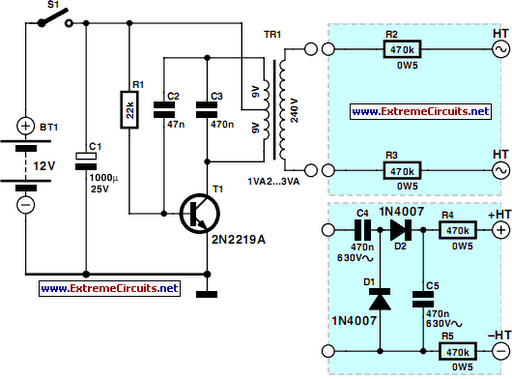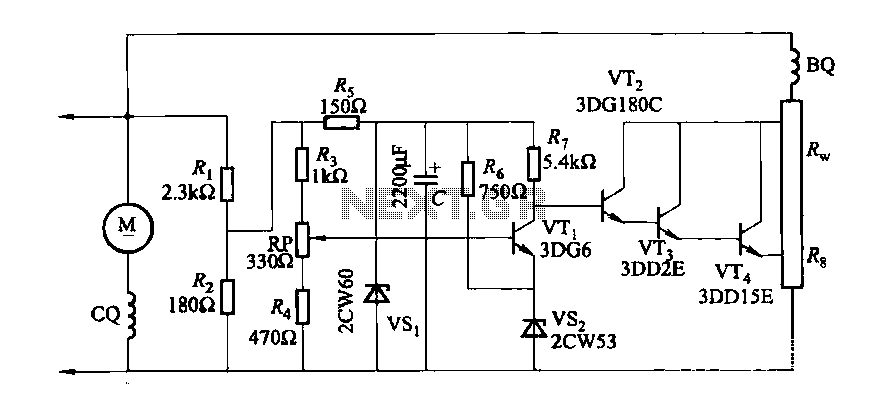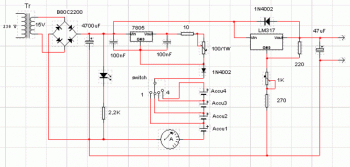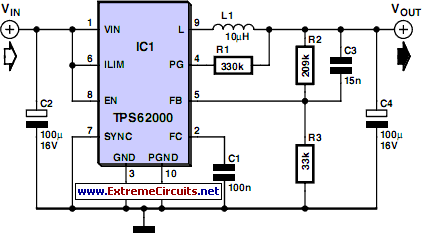
Nicad Charger Uses Voltage Cut-Out

This circuit charges two NiCad cells with a constant current and features dual charging rates, voltage cutoff, and an audible alarm. The circuit is powered.
This circuit is designed to efficiently charge two nickel-cadmium (NiCad) cells, utilizing a constant current method to ensure optimal battery performance and longevity. It incorporates dual charging rates, allowing for flexibility based on the specific requirements of the cells being charged. The voltage cutoff feature is essential for preventing overcharging, which can damage the cells and reduce their lifespan. An audible alarm is included to alert the user when charging is complete or if any issues arise during the charging process.
The schematic typically includes a power supply section that provides the necessary voltage and current for charging. A current regulator circuit is integrated to maintain a constant charging current, which is critical for NiCad cells to avoid overheating and potential damage. The dual charging rates can be achieved through the use of selectable resistors or a microcontroller that adjusts the charging parameters based on user input or preset conditions.
The voltage cutoff mechanism is implemented using a comparator circuit that monitors the voltage across the cells. When the voltage reaches a predetermined threshold, the comparator will trigger a switching element, such as a relay or a transistor, to disconnect the charging current, thus preventing overcharging.
The audible alarm is typically driven by a simple oscillator circuit or a buzzer that activates when charging is complete or if a fault condition is detected, such as a short circuit or cell failure. This feature enhances user safety and provides an additional layer of monitoring for the charging process.
Overall, the circuit design emphasizes safety, efficiency, and user feedback, making it a reliable solution for charging NiCad batteries. Proper layout and component selection are crucial to ensure the circuit operates effectively within its specified parameters, contributing to the safe and efficient charging of the cells.This circuit charges two NiCad cells with a constant current and features dual charging rates, voltage cutoff and an audible alarm. The circuit is powered.. 🔗 External reference
This circuit is designed to efficiently charge two nickel-cadmium (NiCad) cells, utilizing a constant current method to ensure optimal battery performance and longevity. It incorporates dual charging rates, allowing for flexibility based on the specific requirements of the cells being charged. The voltage cutoff feature is essential for preventing overcharging, which can damage the cells and reduce their lifespan. An audible alarm is included to alert the user when charging is complete or if any issues arise during the charging process.
The schematic typically includes a power supply section that provides the necessary voltage and current for charging. A current regulator circuit is integrated to maintain a constant charging current, which is critical for NiCad cells to avoid overheating and potential damage. The dual charging rates can be achieved through the use of selectable resistors or a microcontroller that adjusts the charging parameters based on user input or preset conditions.
The voltage cutoff mechanism is implemented using a comparator circuit that monitors the voltage across the cells. When the voltage reaches a predetermined threshold, the comparator will trigger a switching element, such as a relay or a transistor, to disconnect the charging current, thus preventing overcharging.
The audible alarm is typically driven by a simple oscillator circuit or a buzzer that activates when charging is complete or if a fault condition is detected, such as a short circuit or cell failure. This feature enhances user safety and provides an additional layer of monitoring for the charging process.
Overall, the circuit design emphasizes safety, efficiency, and user feedback, making it a reliable solution for charging NiCad batteries. Proper layout and component selection are crucial to ensure the circuit operates effectively within its specified parameters, contributing to the safe and efficient charging of the cells.This circuit charges two NiCad cells with a constant current and features dual charging rates, voltage cutoff and an audible alarm. The circuit is powered.. 🔗 External reference
Warning: include(partials/cookie-banner.php): Failed to open stream: Permission denied in /var/www/html/nextgr/view-circuit.php on line 713
Warning: include(): Failed opening 'partials/cookie-banner.php' for inclusion (include_path='.:/usr/share/php') in /var/www/html/nextgr/view-circuit.php on line 713





